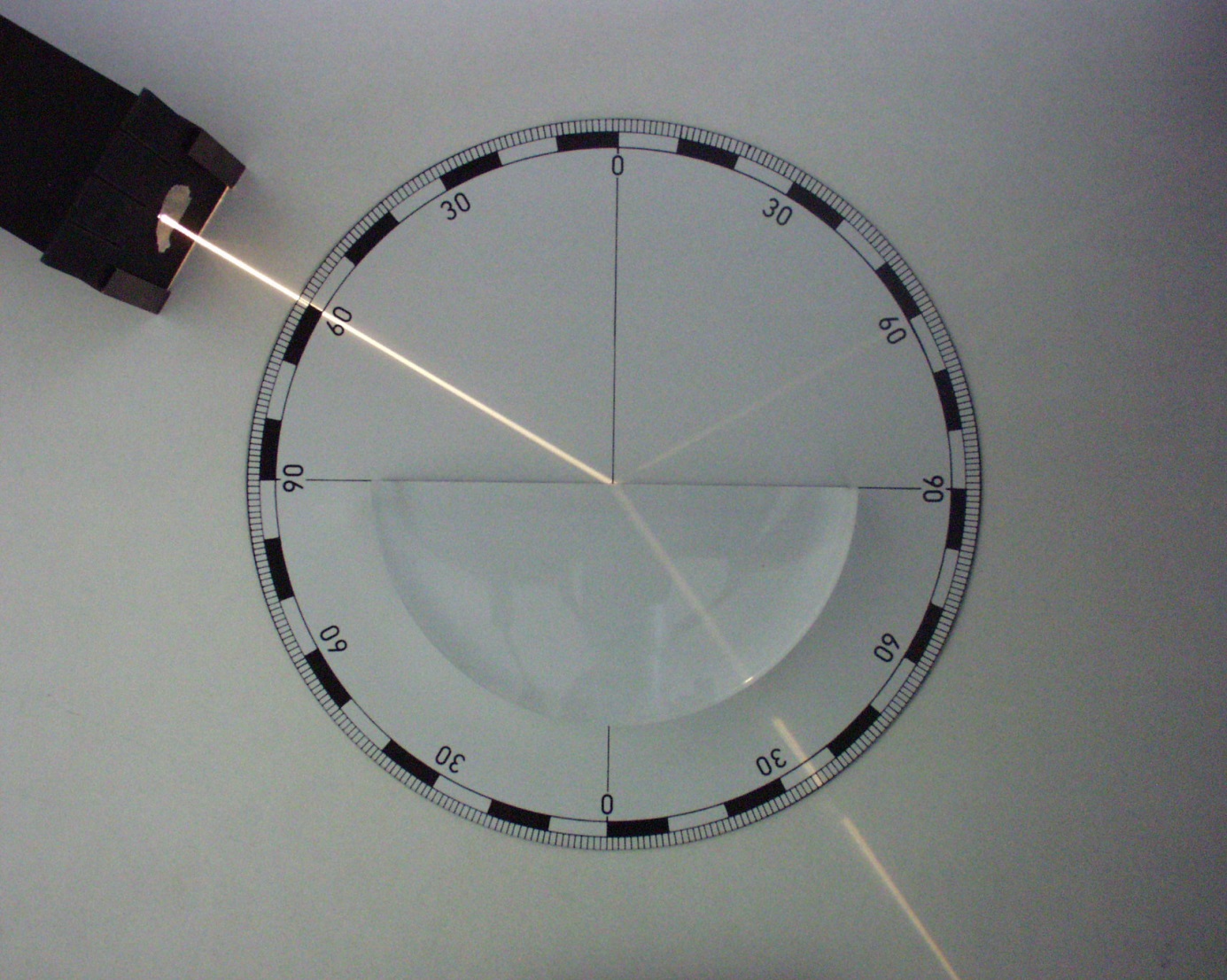What refraction is about…
When light passes a transparent material like glass or fluid, or more precise: passes a surface with different transparent materials on both sides (air/water, air/glass, water/glass, … ), it bends.

The angle depends on the physical properties of the material defined as Index of Refraction (IoR, see this article on values). Then denser the material, the higher the value. The light bends towards the surface normal pointing towards the denser material, so from air to glass: inward, en from glass to air: outward. For a block of glass this means that the light coming out moves parallel to the light coming in, the block just shifts the scene behind the block somewhat aside.
What Poser is about…
The refraction component as such does not do anything specific. It takes any node construction plugged into it, filters it with a color and a value, and adds it to the PoserSurface set of material definitions. So I can put in an image_map, but in contrast to reflections that’s not done often as the refraction needs to represent the scene behind the object, with shifts and bends according to the object shape and thickness. A proper image would be tough to construct.
The node supposed to be connected to it is Refract, from the Lighting group. Note that although refraction mimics a full transparency of the object, the object itself remains opaque for direct lighting, and refraction is not reduced when transparency itself enters the stage as Poser Transparency affects Diffuse and Alternate_Diffuse only. One can reduce the Refraction_Value (or dim the Refraction_Color) accordingly, but the transparency from refraction, and transparency from PoserSurface are still different things.
Combining Transparency, Reflection, Refraction and Gamma Correction (from Render Settings) in one mix might seem a logical thing to do, but will raise numerous issues.
- Combining Transparency and Reflection causes long render times due to infinite internal reflections within the object;
- Balancing Reflection and Refraction requires fine instruments like Fresnel;
- Transparency and Refraction are sort of duplicating each other and
- The Gamma mechanism is well-known for distorting established balances between components.
In various articles you can find more on the refract node, on the Fresnel node, on combining Transparency and Raytracing, and on Gamma Correction (principles and advanced) itself. It might make your brain twist.